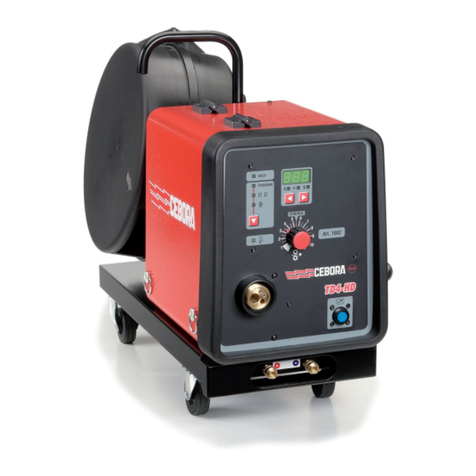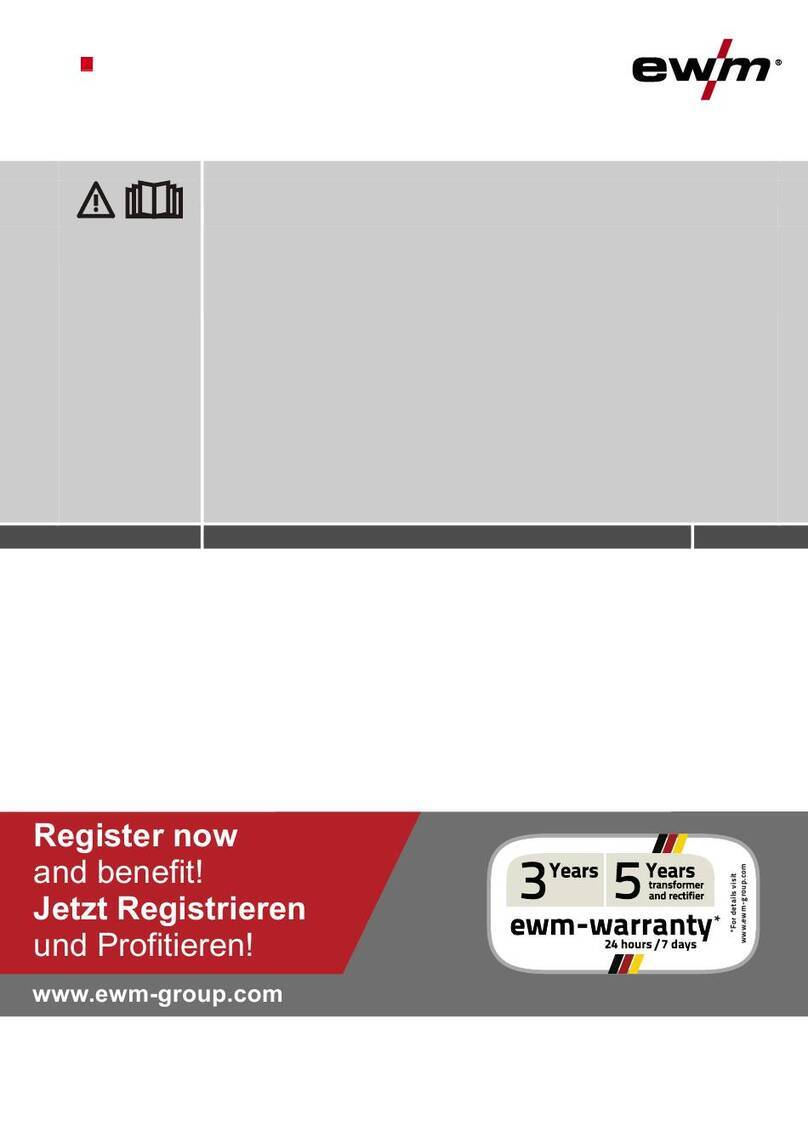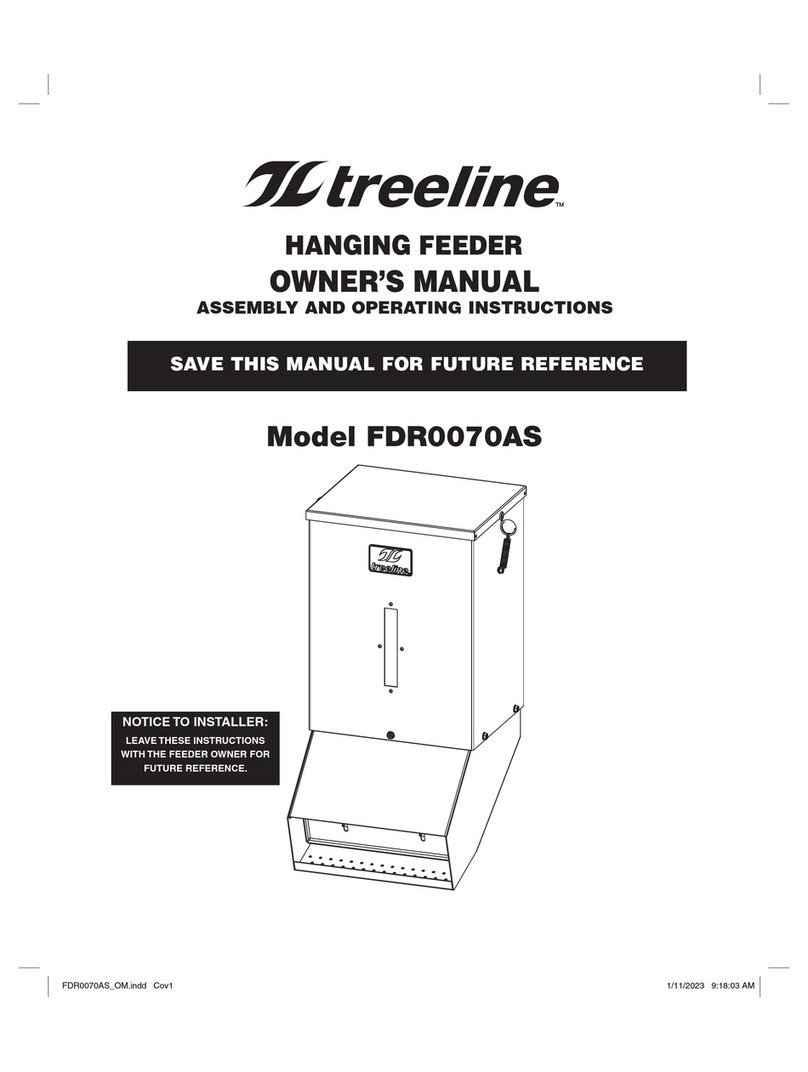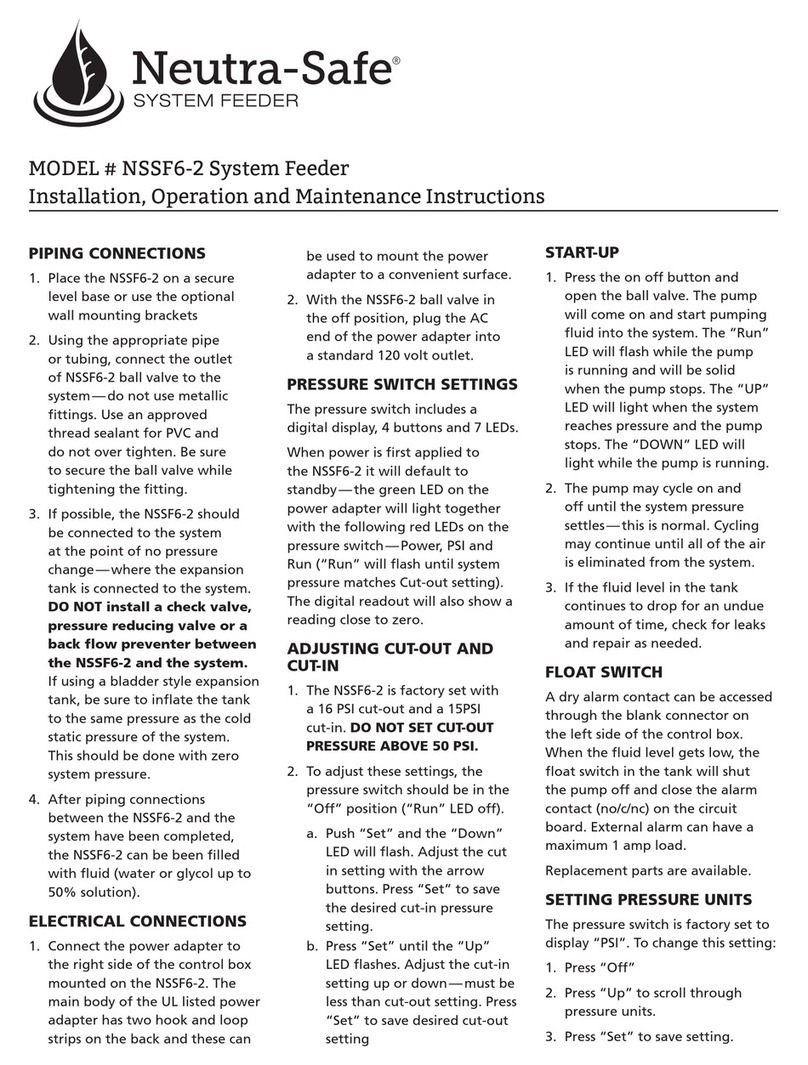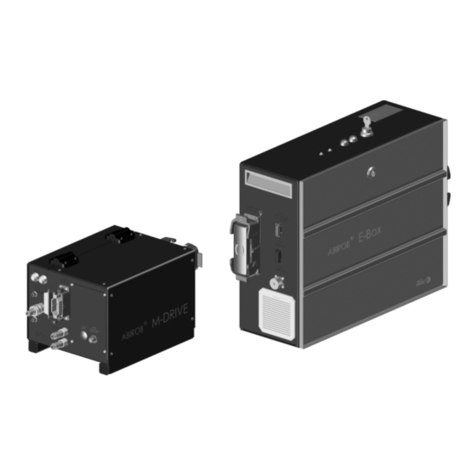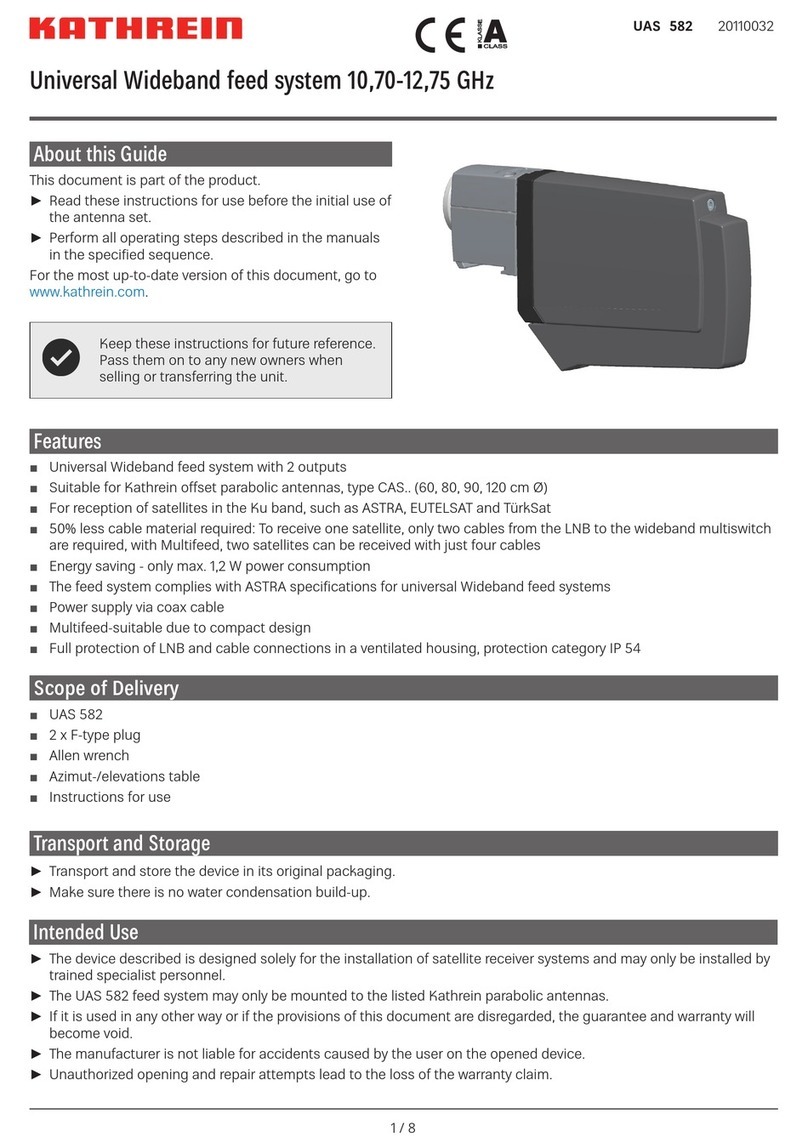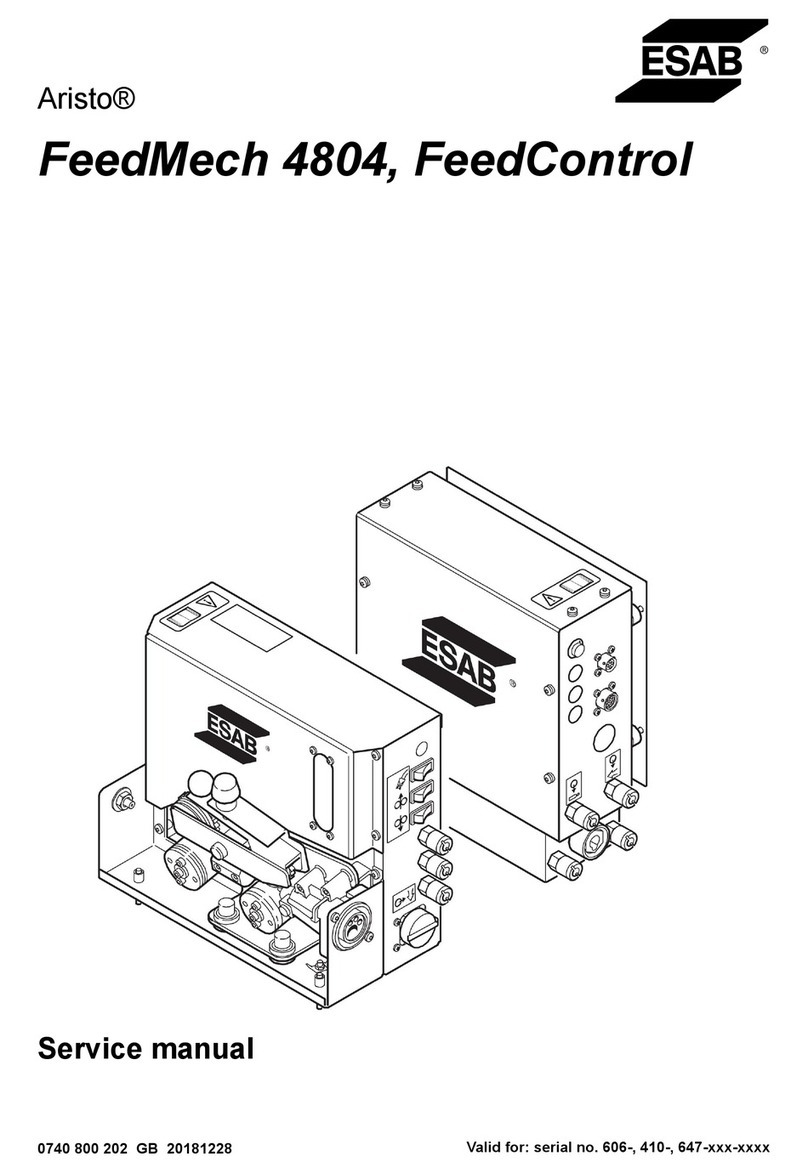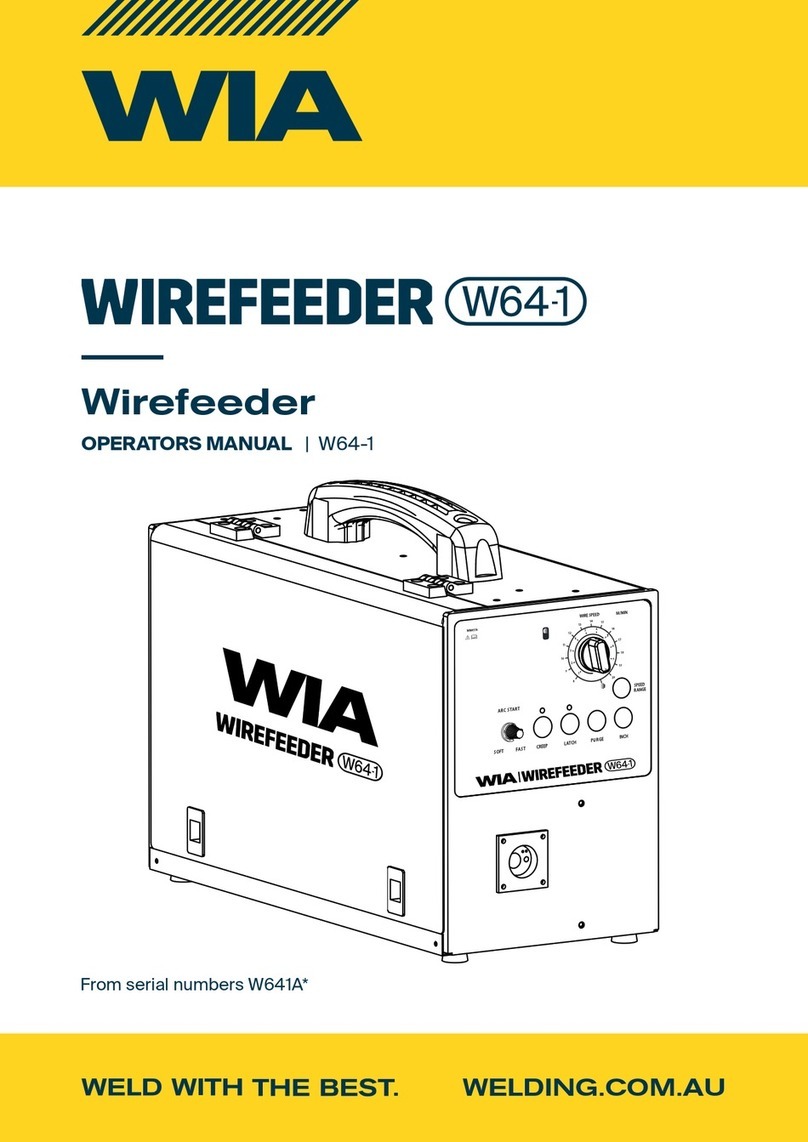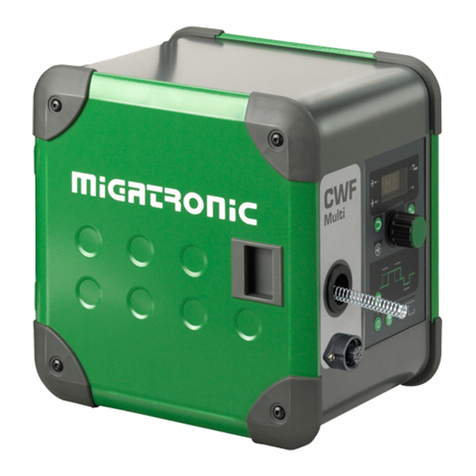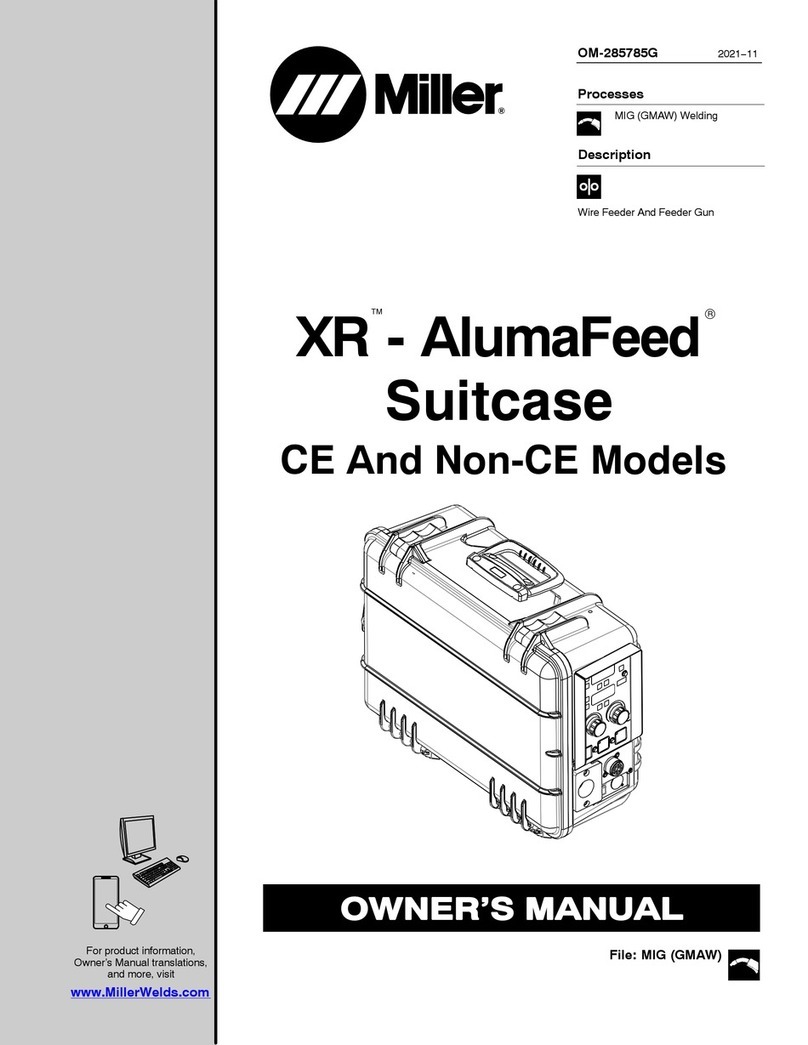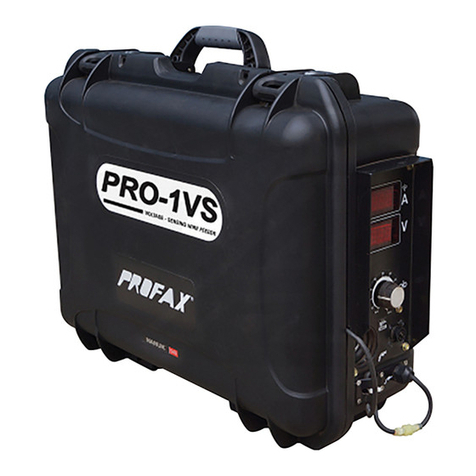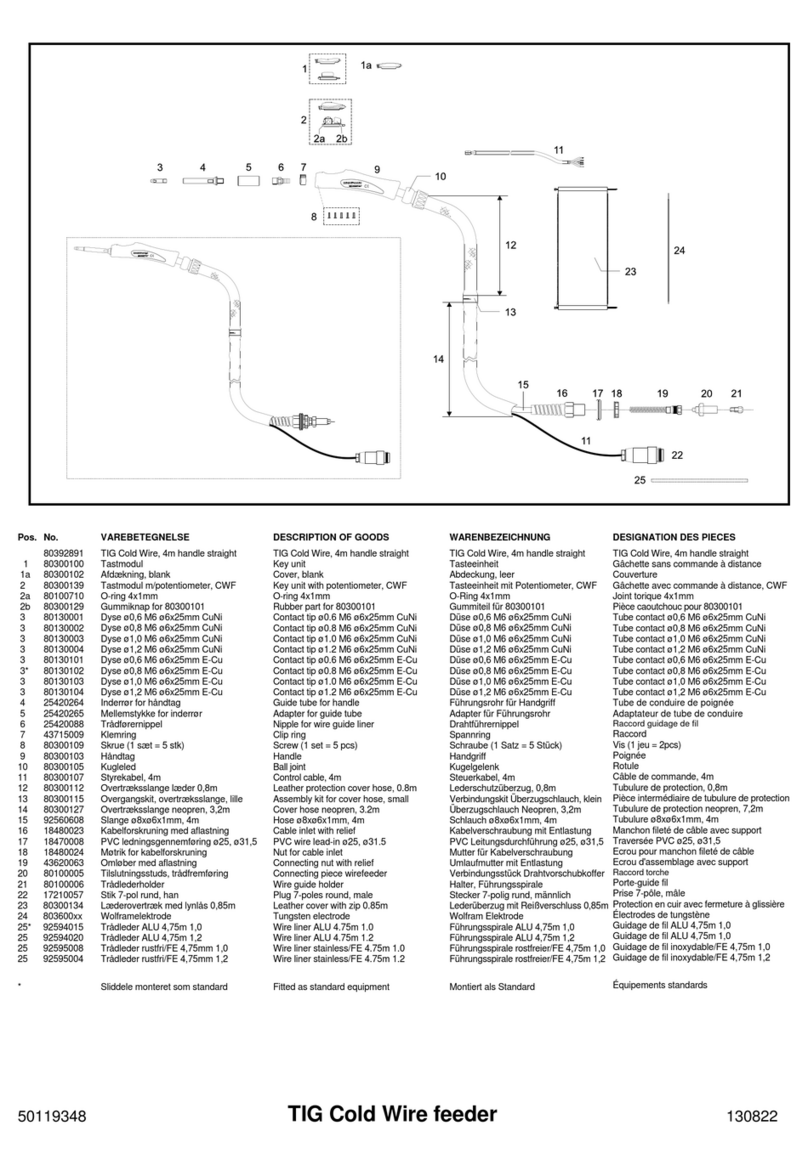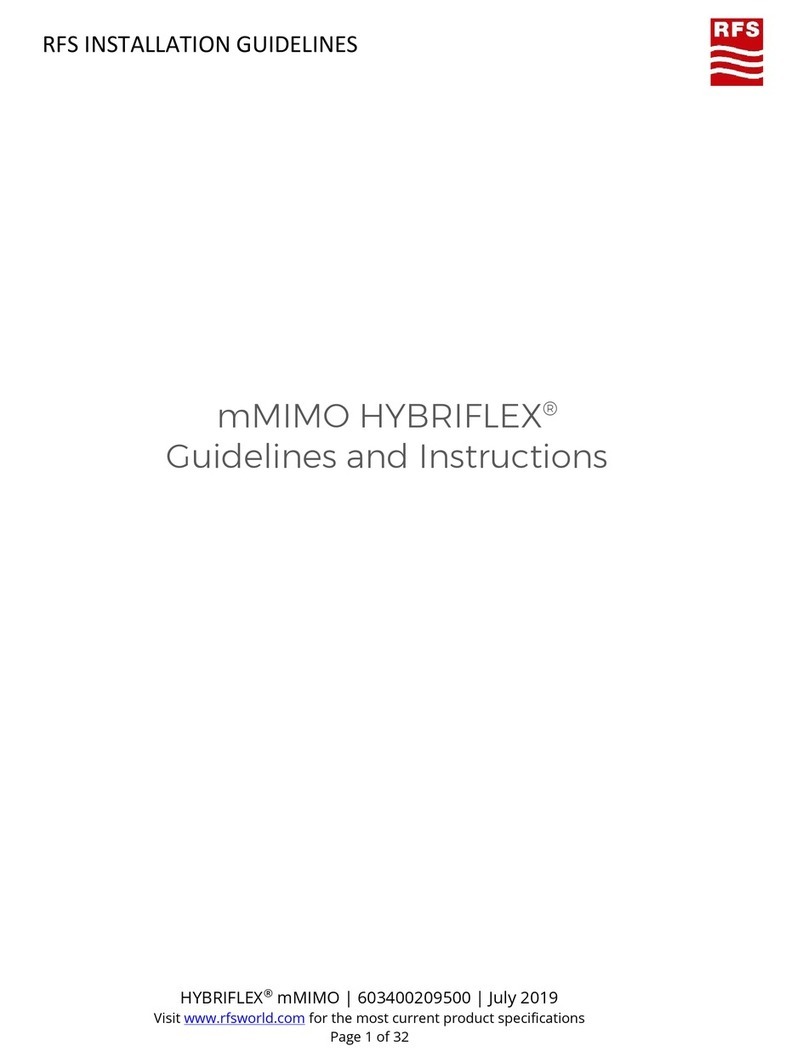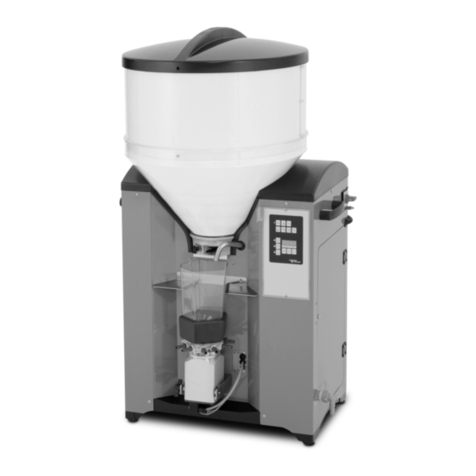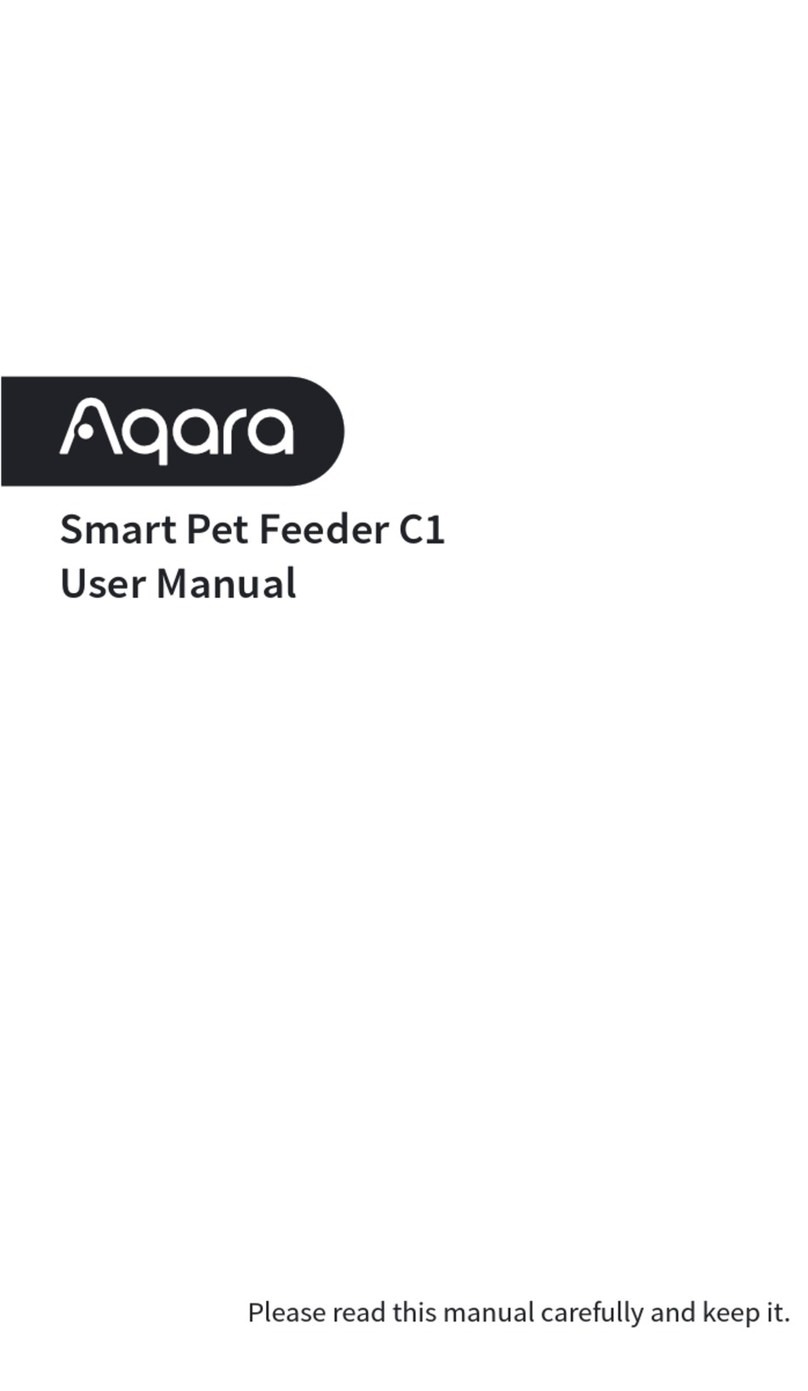
- 10 -
APF0038-48
Loosen LEVER (8) & adjust
CONTROL JOINT UPRIGHT
90° to HOUSING. Tighten
LEVER (8). (SEE 6-3).
F) Assemble FEEDER to OVER
ARM (2). Tighten SCREWS (9).
MAKE SURE:
Center of LEVER (10) is IN
LINE with center of OVER-
ARM (2). (SEE 6-4).
G) Move FEEDER to desired
position by loosen LEVER (10).
Adjust height (11 & 12) and
extension (4 & 5) accordingly.
H) Tighten all LEVERS.
IMPORTANT:
There is certain “PLAY” between
ELEVATING KEY & BRACKET
GROOVE. To assure “STURDY
FEEDING,” pull FEEDER against
your IN-FEED direction, then
tighten LEVER (12). (SEE FIG. 8)
Do it on “EVERY ADJUSTMENT.”
Locken den HEBEL (8) auf & stellen die
KONTROLLE-FGE SENKRECHT 90°
zum GEHÄUSE. Stellen den HEBEL fest
(8). (SIEHT FIG. 6-3).
F) Setzen Sie die ZUFÜHRUNGSVORRICHTUNG
zum GEGENHALTER zusammen (2).
Schrauben die SCHRAUBEN (9) fest.
SORGEN SIE DAFÜR:
Die Mitte des HEBELS (10) bleibt
IN DER LINIE von Mitte des
GEGENHALTERS (2). (SIEHT
FIG. 6-4).
G) Locken Sie den HEBEL (10) auf, damit Sie
die ZUFÜHRUNGSVORRICHTUNG auf
beliebige Position bewegen können. Je
nach dem Bedarf stellen Sie die Höhe (11 &
12) und die Verlängerung (4 & 5) um.
H) Stellen alle HEBEL fest.
WICHTIG: Es gibt mehrere
“Spiele” zwischen den erhöhten Schlüssel
und den Halterrillen. Um “FESTE ZUFUHR”
sicherzustellen, ziehen Sie den
ZUFÜHRUNGSVORRICHTUNG gegen die
EINFUHRSRICHTUNG, dann ziehen Sie den
HEBEL fest (12). (Sieht FIG. 8). Wiederholen
Sie diesen Schritt bei “JEDER
EINSTELLUNG”.
Desserrez la poignée (8), ajustez
la bride de moteur
perpendiculairement au châssis,
serrez la poignée (8) (Voir FIG. 6-
3).
F) Fixez l'alimentateur au bras ajustable
(2) serrez les vis (9) ASSUREZ-VOUS
DE:
D'aligner le centre du bras ajustable
(2) avec le centre de la poignée (10)
(Voir FIG. 6-4).
G) Positionnez l'alimentateur à la position
désirée en desserrant la poignée (10).
Ajustez la hauteur (11 et 12) et le
déplacement latéral ( 4 et 5 ) selon la
position choisie.
H) Serrez toutes les poignées.
IMPORTANT:
Il y a un jeu entre la clé d'élévation et la
vis d'élévation. Pour assurer une
alimentation ferme, tirez l'alimentateur
vers la direction d'alimentation puis serrez
la poignée (12). (FIG. 8) Le faire après
chaque ajustement.
OPERATION
CONTROLS
(FIG. 9 & 10)
WARNING: Disconnect
feeder from power source.
BETRIEBSKONTROLLE
(FIG. 9 & 10)
WARNUNG: Schalten Sie den
Anschluß von der Zuführsvorrichtung aus.
MANŒUVRES DE
FONCTIONNEMENT
(FIG. 9 & 10)
ATTENTION: Débranchez
l’alimentation électrique.
